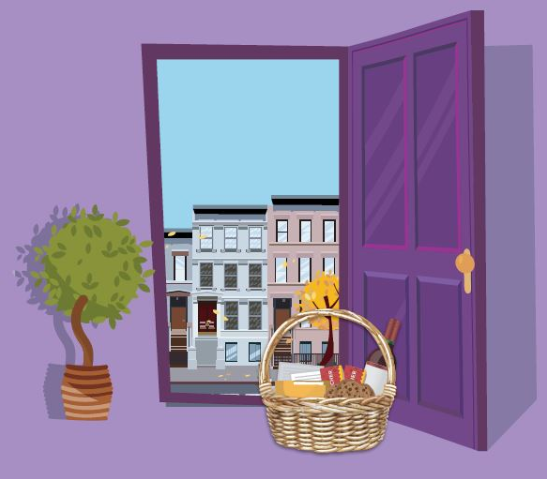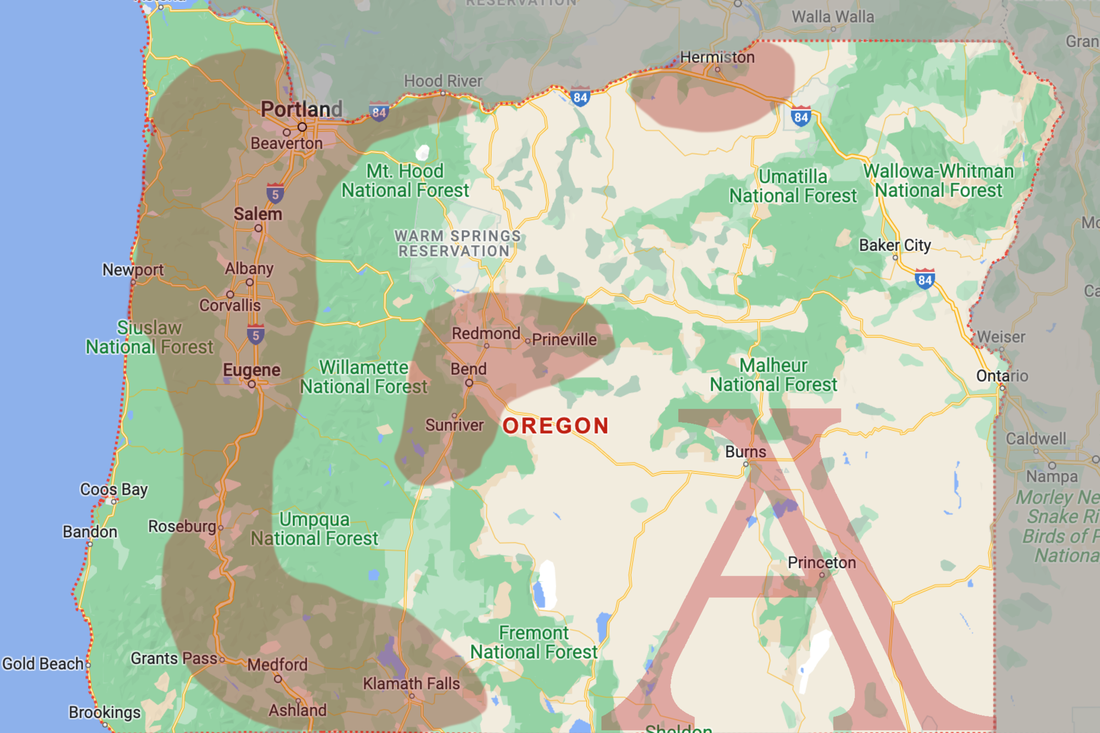|
Common Ground Magazine May/June 2020 BY ERIK ROBINSON, CMCA, AMS You only get one chance to make a first impression. The age old adage applies in personal and professional relationships and in community associations. We only have one opportunity to start out a relationship with a new owner on a positive note.
MOVING INTO AN HOA Imagine you are planning to move from one neighborhood without an HOA to a new neighborhood that is governed by one. Moving is a stressful and expensive endeavor that can drag on for months, and when the right home is found, the process is loaded with escrow, real estate and title documents. In addition to those, you are also provided the Covenants, Conditions & Restrictions (CC&Rs) and Bylaws for your new HOA, documents that combined are typically more than 50 pages of very dry legalese that is difficult to interpret and understand. After moving in, unpacking and entering the nesting phase, things have finally started to settle down. Then you receive a compliance violation letter in the mail for parking in the street. Unknown to you, this is a violation of the CC&Rs and you are one step away from being fined. You call the number on the letter and talk to a board member or community association manager, who informs you about the rule, as well as many others you didn’t know about. The manager asks you if you have read the CC&Rs and Bylaws and, though you had every intention of doing so, had not been able to find the time with all the other issues that come with moving. While this interaction was not necessarily negative (though it can easily end up that way!), the manager and community associations missed an opportunity to provide a much more informative and welcoming experience, which may have led to a new owner feeling embraced, informed, and impressed. Let’s be honest: Becoming a member of a community association, especially if you have never lived in one before, can be daunting. There are many rules, regulations, architectural guidelines, application processes, fees, amenities, maintenance standards and more which need to be understood by every member, regardless of the amount of time they have resided in the community. Enter the welcome packet. It’s a vital tool to knock that first impression out of the park, cultivate positive feelings towards the community, and potentially get someone involved as a volunteer down the road. Variations of this exist across the industry, and its contents really depend on the community, its features, and what are the most important things a new owner should understand right off the bat. Here are a few relatively standard items that should be included in your packet: Welcome Letter. This should act as a general greeting from the association representative. It typically contains vital information on contact information, assessment amounts, frequency and payment remittance instructions, and directs owners to any website. Community Rules & Regulations. This document should bullet point the rules and regulations for the community for quick reading and digestion. It should not provide all the details, nuances and potential consequences of violation, Instead, it should be a brief and broad overview, with an invitation to seek more details in the association’s governing documents or talk with an association representative about them. This section should include a note that if CCRs and Bylaws were not provided during the real estate transaction, to reach out and request copies from the board or manager. HOA Board of Directors & Committee Makeup. A brief document illustrating the makeup of the Board, its directors, as well as existing Committees and their members can go a long way in making a new owner feel like the governing bodies of the community are transparent and open. Part of this document should also include who to contact in the event an owner is interested in getting involved. Amenity Information. Does your community have a club-house? Pool? Tennis Courts? Gym? A document outlining the operational hours, reservation system(s), and other pertinent info needs to be included. This helps new owners immediately understand what a large portion of their assessment funds and how to utilize those amenities. Owner Contact Sheet. This document is vital for collecting contact information communication with new owners. The association should urge owners to fill it out and return it promptly. Many Associations now have electronic communication policies and compiling reliable email addresses from contact sheets for your Association members makes getting information out much easier. THE NEXT STEP Hopefully, the elements in the list make a good first impression, but there’s more a community can do to go from good to great. Crosswater Owner’s Association in Sunriver, OR, established a hospitality committee after one member moved in and did not find the community or management to be very friendly. “When we bought and built our home, we did not feel like Crosswater was a very welcoming community. It was all about collecting money and following rules. It was a bad experience,” said owner Gene Krueger. “Once we got to know people in the community our feelings did an about face and we realized that the people were welcoming, friendly and hospitable.” Crosswater didn’t want any other new owner to feel the same way upon moving in, so the Board appointed Gene the Chair of a new Hospitality Committee, provided a budget and general goals, and the Committee has since welcomed many new owners with a personalized letter, bottle of wine, local well-known foods, and gift cards to local small businesses -- in addition to the welcome packet sent by management. The Committee also schedules quarterly mingle events for new and existing members at the Clubhouse and helps plan the annual owner’s barbecue. “The feedback from the new owners regarding the welcoming packets, written and verbal interaction has been no less than phenomenal. Expressions of thanks for the welcoming baskets and the discounts and goodies included have met with great acceptance and appreciation. One of our new owners even gave a testimony of appreciation at the annual meeting stating their appreciation for the positive and welcoming outreach they received after purchasing their lot in Crosswater,” Gene said. Taking these simple steps will ensure new owners feel like they’ve made the right choice and are a part of a friendly community. PROVIDING MORE DETAILS So, now you’ve developed a comprehensive Welcome Packet for new owners in a community, and possibly some volunteers have stepped up and a Committee formed to further the neighborly spirit. What else can be done to ensure a new owner’s understanding of everything happening in the community? How can you provide more useful information without bogging down the owners in lengthy email correspondence or a spirited game of phone tag? A series of FAQs can assist here and isn’t difficult to produce for an association board or manager. Your FAQs should fill in the information gaps and offer a few more details. Some examples include:
EASY SOLUTIONS, TERRIFIC RESULTS If your community isn’t taking these steps or others like them, it’s time. Documents for the Welcome Packet likely already exist, volunteering on a hospitality or welcoming committee would be a lot more fun than serving on something like an architectural review committee so it shouldn’t be too hard to garner interest. And if you have experienced volunteers or a manager who has been working in a community for even a short time, developing FAQs also should come easily. Taking these simple steps will ensure new owners feel less stressed about having to read recorded governing documents. They’ll also feel like they’ve made the right choice and are part of a friendly community, not a rigid, rules-and-assessments-focused machine. Erik Robinson is a senior community manager with Aperion Management Group, AAMC, in Central Oregon. [email protected]
0 Comments
Common Ground Magazine May/June 2019
BY MAUREEN RADON, MBA, CMCA Facilities and finances probably weren’t top of mind for many community association residents before the COVID-19 outbreak. Now, as residents spend more time at home and household income possibly decreases, association expenses have come into focus. Are costs going down because the pool is off limits? Is the association saving money since the clubhouse is closed and kids can’t play in the playground? How does this impact my assessments? Homeowners are asking whether associations plan to decrease or completely hold off on charging assessments. It’s a tough conversation for community association board members and community managers to have because we know this isn’t a possible outcome regardless of the circumstances. Those of us who have managed communities through tough economic downturns know that collections will be challenging, and it will take a while for association finances to recover. That still doesn’t mean assessments can stop or decrease for contracted maintenance and upkeep, or that the value of our management services goes down. Temporarily closing the pool doesn’t stop ongoing maintenance requirements. Cancelling the contract would have an adverse impact on property values once the pool fills with algae and parts break, requiring larger expenses than would have been incurred to maintain it as usual. Cutting back on landscaping services would have a similar result, as overgrowth or dead plant material would negatively impact the community both short- and long-term. Minimizing the value of contracted security takes away a great asset that keeps eyes and ears on the property and enforces facility closures. These contracted expenses were put in the budget for a reason, and they’re still important. Projects that have been budgeted in the reserves fund and planned for years should go on as long as proper safety and social distancing measures are taken by contractors. Managers and contractors may find it’s easier to accomplish some projects while fewer owners are in the common areas, such as repainting interiors, replanting areas with heavy foot traffic, and making repairs to laundry facilities that have constant use. If it can be avoided, the reserve fund should not be used to offset operating costs; associations that use reserve funds in this way will take years to recover. How about the community management contract? Homeowners may believe that community managers now have fewer obligations since amenities are closed, but there are still contracts to coordinate, residents to assist, and legal requirements to meet. It’s not an option to let the insurance lapse or choose to let litigation go unanswered. Someone needs to pay the association’s bills, process architectural review applications, and keep the proverbial wheels for the association going in all sorts of ways. Now is the time when community managers can become familiar with their association’s budget and figure out if there are any places to cut costs, deploy resources to accomplish projects under a changing timeline, and build deeper relationships with the contractors who service their communities. How will your community handle questions from homeowners about assessments? Comment below. Maureen Radon is a senior community manager with Aperion Management Group, AAMC, in Central Oregon. Coronavirus Creates Meeting Mayhem
https://www.communityassociationinsider.com/coronavirus-creates-meeting-mayhem/?access_code=491728 Dealing with the Financial Fallout of a Public Health Emergency https://www.communityassociationinsider.com/dealing-with-the-financial-fallout-of-a-public-health-emergency/?access_code=045280 |
Archives
February 2024
|
Homeowners' Association (HOA) management services, now serving all of OregonPortland, Bend, Salem, Eugene, Medford and all surrounding areas.
Mailing Address:
855 SW Yates Drive Suite 202 Bend, OR 97702 VISITORS BY APPT. ONLY |
Contact UsPhone: 541-389-3172
Fax: 541-678-5204 Email: customerservice@aperionmgmt.com |


 RSS Feed
RSS Feed
